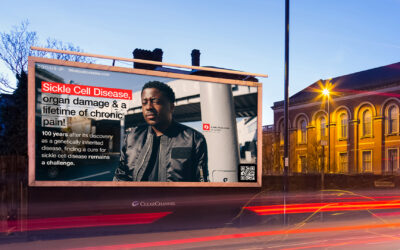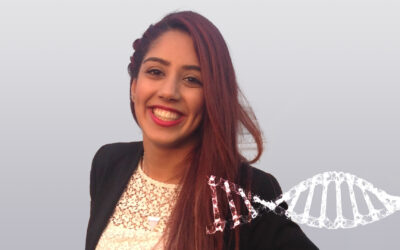This is What Sickle Cell Looks Like: The Champion’s Perspective
Competitive athlete Herty Quaye shares her thoughts on pushing the boundaries on Sickle Cell Disease; and the role of supportive ecosystems in doing so.
Every day, Herty Quaye must make a difficult decision: chase her success and carry the pain that comes with it, or sit still and watch her sporting ambitions pass her by.
In Herty’s case, the risk of pain is not just figurative. It is the very real and excruciating consequence of pushing herself too far on some days or forgetting to let her body rest the next. She is a successful competing athlete and newly qualified personal trainer; and she is a patient with Sickle Cell Disease (SCD).
In many ways, Herty is not unlike many of the famous athletic names that compete internationally. She mirrors the likes of Simone Biles, Serena Williams and Allyson Felix in her energy, ambition and focus. However, the challenges Herty faces are different. Most athletes will encounter injuries or take months off for recovery throughout their careers. When Herty trains or competes, she – very literally – runs the risk of depriving her body of the oxygen it needs, damaging critical muscle and organ tissue, or dying. So far, she hasn’t let her condition interfere with the pace of her career and dreams. But Herty knows that one day, she might face a moment when everything will need to stand still:
“Chasing my dreams and being the best athlete I can be means being in my body. It means listening to what my pulse tells me, what my blood oxygen tells me, what my heart tells me. If I don’t listen carefully, a day might come when I can no longer do what I can do. When I can no longer train or run.”
“I don’t know if I’ve made peace with that yet, but for now, all I can do is focus on being better and being stronger – and making the people around me stronger too.”
Choosing between being safe or doing what she loves is not unfamiliar territory for Herty. Laughing, she recalls a moment in her school days when she forced herself to run, and eventually win, an athletics race. She did this with the knowledge that she would most likely find herself bed-bound for a week afterwards:
“Like every young girl, what I loved most about school was PE and running around with my friends. One day we had to compete in a race. I knew I would win – I was fast, even at a young age. But I knew that if I did, I would most certainly be a vegetable for the next few days. I would find myself in pain so extreme that I wouldn’t be able to move my arms, my limbs.”
“Of course, I chose to run the race. And I won. What I experienced next, what I went through several times growing up – it will always be worth doing what I love, but I dare you to imagine how painful the results of my actions were.”
Herty did not discover that she had SCD until she moved from Ghana to the UK as a teenager. For years, her family were perplexed by the multiple pain episodes she experienced, many of which brought her to her knees or lying on the floor, immobile. It was only until she received blood tests from a doctor in Southampton, revealing that she had SCD, that showed why she spent so many years in pain as a child.
“After one of my first pain episodes in the UK, I was taken to a doctor to run some tests. After years of wondering why I couldn’t run, move or do certain things without experiencing pain, I finally learned that I had SCD.”
“With the help of an SCD counsellor who I admired, I was able to put to rest many questions I had about myself. Why exercise hurt more than it should, and how I could make sure I could run without ending up in hospital. She gave me ideas on how to manage my condition at home and how treatments like transfusions could help my VOCs.”
Above all, this experience taught Herty the importance of having information about her physical and genetic needs. By designing a care, exercise and health plan with her medical teams and family, she could finally construct a life that would let her balance fitness and her condition. She credits higher visibility of key vital signs, through wearables and clinical monitoring offered by ecosystems like Sanius Health, for helping her on this journey.
“I’ve learned to master my breathing and heart rate. Access to something that can measure my heart rate, like a wearable watch and ECG, allows me to control my movement and breathing. Reviewing changes to diastolic and systolic pressure, or pulse rate, alerts me when I need to take a breather and rest.”
“I’ve been able to design my training in alignment with how my body is doing at a given time. As a result, I can outrun and outlast almost everyone at the gym. Knowing how my activity, diet and sleep affect my physicality allows me to be the champion I want to be. It also gives me the knowledge to help other people design their own workouts according to their bodies too.”
Going forward, Herty is passionate about teaching others the importance of navigating their fitness journeys and abilities simultaneously. She aims to help them reach their physical peaks while also surpassing her own sporting limits.
“Learning about more SCD experiences, building up my community’s strength as well as my own is something I’m aiming for. I’m living my life, and being a champion is just a part of who I am. I want to encourage others to do and feel the same, no matter where they are in their health and fitness journeys.”
To raise awareness of SCD, we are working with advocacy leaders like Herty Quayle and other members of the SCD community to make improved SCD care a reality.
Learn more about raising awareness around Sickle Cell Disease by accessing Sanius Health’s campaign site: https://whatscdlookslike.com/




